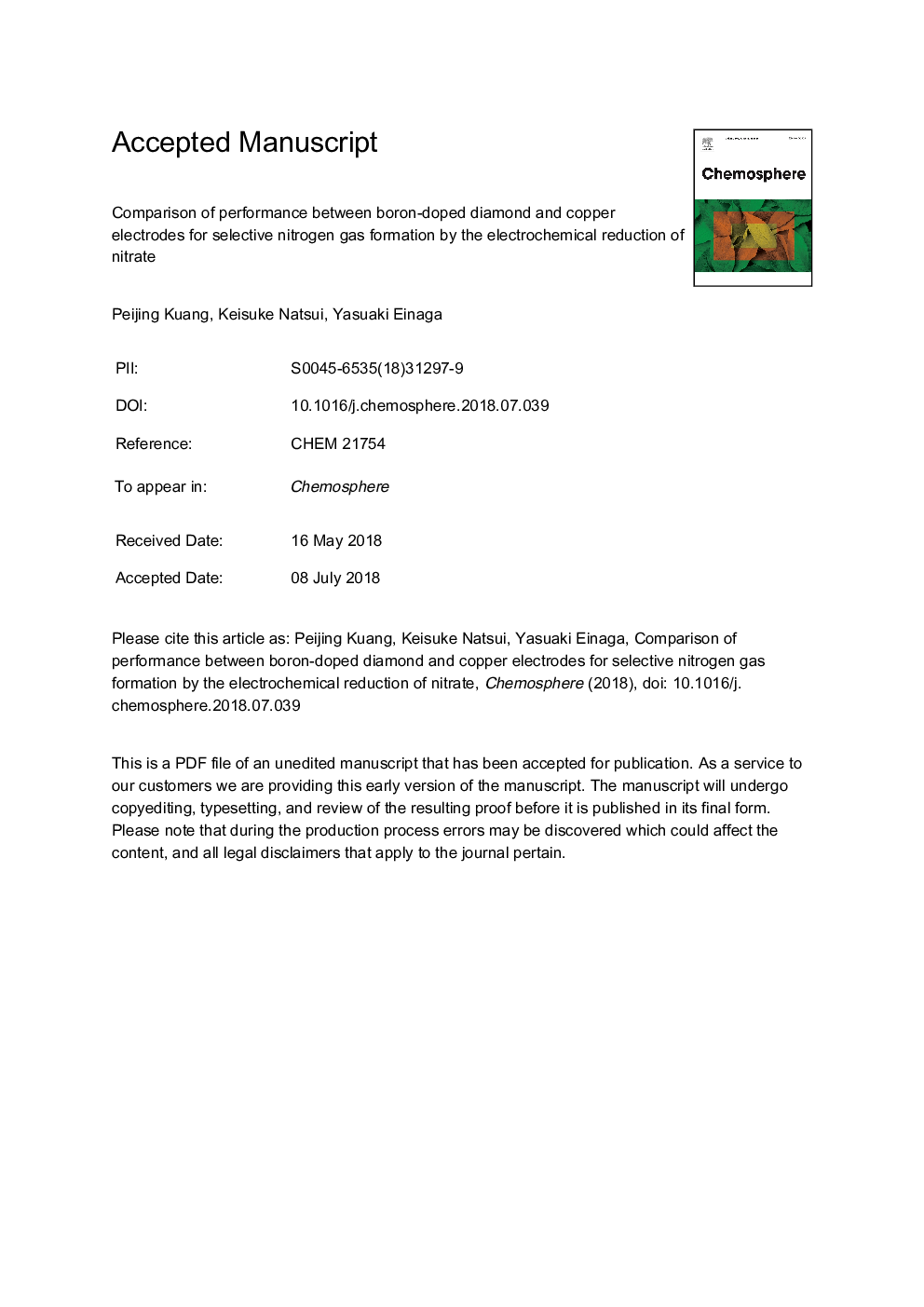| Article ID | Journal | Published Year | Pages | File Type |
|---|---|---|---|---|
| 8850510 | Chemosphere | 2018 | 23 Pages |
Abstract
The electrochemical nitrate reduction by using boron-doped diamond (BDD) and copper (Cu) electrodes was investigated at various potentials. Product selectivity of nitrate reduction was strongly dependent on the applied potential for both electrodes. The highest selectivity of nitrogen gas production was obtained at â2.0â¯V (vs. Ag/AgCl) by using a BDD electrode with a faradaic efficiency as high as 45.2%. Compared with Cu electrode, nitrate reduction on BDD electrode occurred at more positive potential, and the production of nitrogen gas was larger. The transformation of surface-adsorbed nitrate into molecular nitrogen would be accelerated on BDD electrode with hindering nitrite production. In addition, low concentration of surface-adsorbed hydrogen on the BDD would also retard the ammonia generation, leading to increase in the selectivity of nitrogen gas formation. Meanwhile, BDD electrode could hinder the hydrogen evolution reaction, which enhanced the efficiency for nitrate reduction and decreased energy consumption. BDD electrode has excellent stability to remain better performance for reducing nitrate during electrolysis without any variation of surface morphology or chemical components.
Related Topics
Life Sciences
Environmental Science
Environmental Chemistry
Authors
Peijing Kuang, Keisuke Natsui, Yasuaki Einaga,
